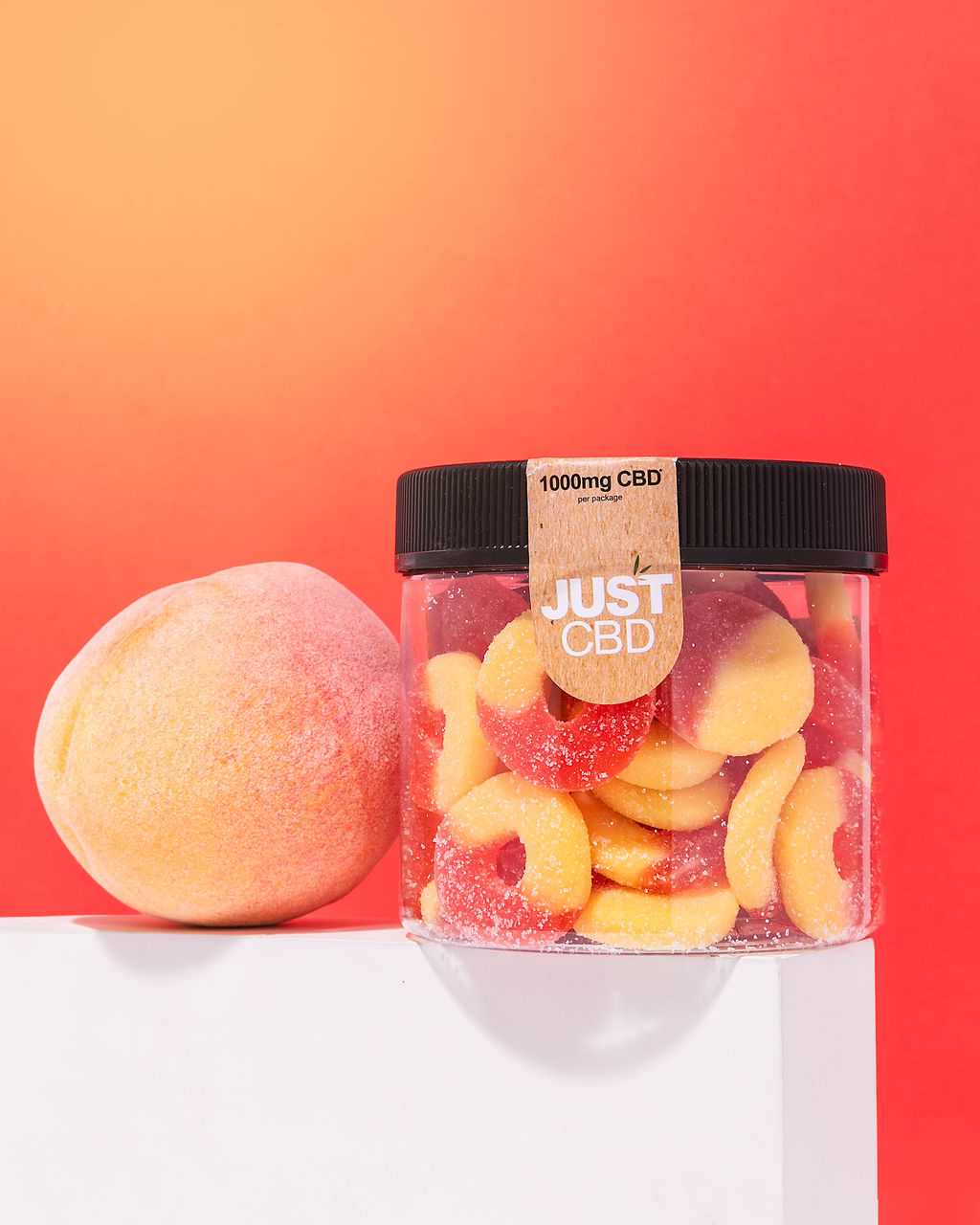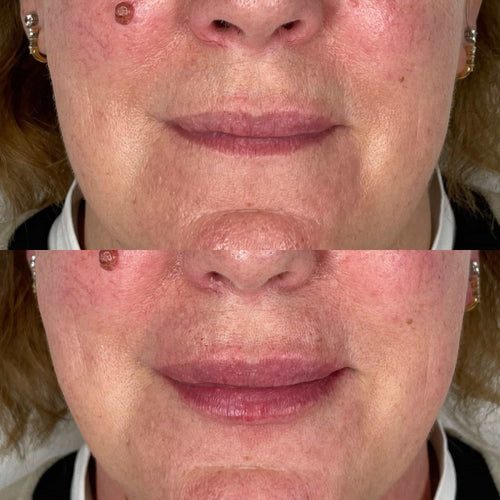Understanding CBD Gummies for Stress Relief
The Science Behind CBD’s Anxiolytic Effects
Buy JustCBD Hemp Infused Gummies
Cannabidiol (CBD) has been increasingly touted as a potential natural solution for managing stress and anxiety. CBD gummies, in particular, have become popular due to their ease of use and discreet dosing. But what exactly is CBD, and how does it work to provide relief from stress?
CBD is one of the many compounds found in the cannabis plant, known as cannabinoids. Unlike tetrahydrocannabinol (THC), another well-known cannabinoid, CBD does not produce a “high” effect. Instead, CBD interacts with the body’s endocannabinoid system (ECS), which plays a crucial role in regulating various physiological processes, including mood and stress response.
The ECS consists of two primary receptors: CB1 and CB2. While CB1 receptors are primarily located in the brain, CB2 receptors are found throughout the body. CBD interacts with both receptor types, although its affinity for CB2 is significantly higher.
Research suggests that CBD’s anxiolytic (anxiety-reducing) effects are mediated through various mechanisms, including:
– Modulation of glutamate release: Glutamate is a neurotransmitter involved in excitatory signaling. Elevated levels of glutamate have been linked to anxiety and stress. CBD has been shown to reduce glutamate release in the brain.
– Inhibition of GABA degradation: GABA (gamma-aminobutyric acid) is an inhibitory neurotransmitter that helps regulate the activity of neurons. CBD can slow down the breakdown of GABA, allowing it to remain active for longer and promoting a sense of calm.
– Activation of 5-HT1A receptors: The serotonin system plays a significant role in mood regulation. CBD activates 5-HT1A receptors, which are involved in reducing anxiety and stress.
The combined effects of these mechanisms contribute to the anxiolytic properties of CBD, making it a potential natural solution for managing daily stress and anxiety. When choosing CBD gummies, consider the following:
– Look for products with clear labeling: Ensure that the product contains only CBD isolate or broad-spectrum CBD (no THC), and check the recommended dosage.
– Be aware of the potential for interactions: As with any supplement, consult a healthcare professional before combining CBD gummies with other medications or health conditions.
– Start low and gradually increase: Begin with a small dose and monitor your body’s response to avoid overwhelming side effects.
By understanding the science behind CBD’s anxiolytic effects and following these guidelines, you can harness the potential benefits of CBD gummies for stress relief. However, it’s essential to note that individual results may vary, and more research is needed to fully understand the effects of CBD on anxiety and stress.
In conclusion, CBD gummies offer a convenient and natural way to manage daily stress and anxiety. By understanding how CBD works, you can make informed decisions about its use and potentially benefit from its anxiolytic properties.
CBD has been shown to have anxiolytic effects in several studies, including one published in the Journal of Psychopharmacology which found that CBD reduced anxiety in individuals with social anxiety disorder.
CBD gummies have become a popular way to incorporate cannabidiol into one’s daily routine, and for good reason – they offer a discreet, convenient, and potentially effective method for managing daily stress.
As we navigate the complexities of modern life, it’s not uncommon for individuals to experience feelings of anxiety and overwhelm. Chronic stress can have serious consequences on both physical and mental health if left unchecked.
CBD, short for cannabidiol, is a non-psychoactive compound found in cannabis plants. Unlike THC (tetrahydrocannabinol), CBD does not produce a “high” and has been shown to possess anxiolytic properties – meaning it may help alleviate anxiety.
Studies have demonstrated the efficacy of CBD in reducing stress and anxiety in various populations, including those with social anxiety disorder. A notable study published in the Journal of Psychopharmacology found that CBD significantly reduced anxiety in individuals suffering from this condition.
CBD gummies are an appealing option for stress management due to their ease of use and potential benefits. These edibles typically contain a precise dose of CBD, eliminating the need for measuring or calculating individual servings.
When selecting CBD gummy edibles, consider the following factors:
Cannabis Source: Opt for products derived from high-quality, organic cannabis plants to ensure potency and purity.
Dose: Begin with a low dose (typically 10-20mg) and gradually increase as needed. Be mindful of CBD’s interactions with other medications or health conditions.
Ingredients: Look for products containing natural sweeteners, flavorings, and colors to avoid artificial additives.
Upon consuming CBD gummies for stress relief, be aware of the potential effects:
Rapid Onset: Effects may become noticeable within 30-60 minutes after consumption, although individual experiences may vary.
Duration of Effect: CBD’s anxiolytic effects can last anywhere from several hours to a full day, depending on the dose and individual tolerance.
Side Effects: Common adverse reactions include drowsiness, dry mouth, and stomach upset. In rare cases, CBD may interact with other medications or exacerbate underlying health conditions.
In conclusion, CBD gummies offer a promising method for managing daily stress and anxiety when used responsibly. By understanding the context of CBD research, selecting high-quality products, and being aware of potential effects, individuals can harness the benefits of this natural compound to improve their overall well-being.
Selecting the Right CBD Gummies for Stress Management

Key Considerations for Optimal Effectiveness
Selecting the right CBD gummies for stress management can be a daunting task, given the numerous options available in the market. With the growing popularity of CBD products, many companies have started producing CBD gummies that claim to provide relief from anxiety and stress. However, not all CBD gummies are created equal, and it’s essential to consider several factors before making a purchase.
Firstly, it’s crucial to understand that not all CBD is created equally. The quality of the hemp used to produce the CBD can significantly impact its effectiveness. Look for products that have been lab-tested and contain CBD extracted from organic hemp plants. This ensures that you’re getting high-quality CBD that is free from contaminants.
Another critical consideration is the potency of the product. Different people may require varying levels of CBD to experience relief from stress and anxiety. Some products may contain a single dose, while others may have multiple doses in a single serving. It’s essential to consider your individual needs before choosing a product with a specific potency.
Moreover, the type of hemp used can also impact the effectiveness of the CBD gummies. Full-spectrum hemp contains all the cannabinoids found in the plant, including THC (although in minimal amounts), which may enhance its therapeutic effects. Broad-spectrum hemp, on the other hand, contains only the desired cannabinoids and terpenes.
The onset and duration of action are also crucial factors to consider. Some CBD gummies may take longer to start working due to the delayed digestion process. Others may provide rapid relief but might not last as long. Consider your lifestyle and preferences when choosing a product that suits your needs.
Another factor to consider is the presence of other ingredients, such as melatonin or other sleep aids, which can interact with CBD and affect its efficacy. Be cautious when choosing products containing multiple active ingredients, especially if you have sensitive skin or allergies.
The taste and texture of the product are also essential considerations. Some people may prefer a sweeter or fruity flavor, while others might find it unpleasant. Choose a product that aligns with your personal preferences and dietary needs.
Lastly, it’s crucial to consider the brand reputation and customer reviews when selecting CBD gummies for stress management. Look for brands with excellent customer service, transparent labeling, and high-quality products.
In conclusion, selecting the right CBD gummies for stress management requires careful consideration of several factors, including the quality of hemp used, potency, type of hemp, onset and duration of action, presence of other ingredients, taste and texture, brand reputation, and customer reviews. By taking these factors into account, you can choose a high-quality product that provides optimal effectiveness in managing daily stress.
When choosing CBD gummies, look for products that have been tested by a thirdparty lab to ensure purity and potency. The National Institutes of Health recommends considering the concentration of CBD in each product, as well as any potential additives or fillers.
CBD gummies have become a popular option for managing stress and anxiety due to their ease of use and potential therapeutic benefits. When selecting the right CBD gummies for stress management, there are several key factors to consider.
First and foremost, look for products that have been tested by a third-party lab to ensure purity and potency. Reputable manufacturers will provide certification from a trusted lab, such as the ISO 17025 or USP (United States Pharmacopeia) standards, which verify the product’s CBD content and check for contaminants like heavy metals and pesticides.
The National Institutes of Health recommends considering the concentration of CBD in each product. As a general rule, start with a low to moderate dose (typically between 5-10mg per serving) and adjust as needed. Some people may find higher doses more effective, but this can also increase the risk of side effects.
Be wary of products that make exaggerated claims or lack scientific evidence to support their effectiveness. Remember that CBD gummies are not a magic solution for stress management; they can be a useful complement to other self-care practices like meditation, exercise, and therapy.
In addition to the concentration of CBD, consider any potential additives or fillers in the product. Some ingredients may exacerbate anxiety or interact with medications, so it’s essential to read labels carefully and consult with your healthcare provider if necessary.
Flavor and texture are also important considerations when selecting CBD gummies for stress management. While some people may prefer a specific flavor profile or texture, others may find certain options unappealing. Choose products that you enjoy taking and that fit your lifestyle needs.
Finally, consider the source of the CBD in the product. Look for products that use high-quality hemp-derived CBD extracted using clean and sustainable methods. Some manufacturers may also offer third-party tested CBD oil or isolate for added flexibility and customization.
By considering these factors and choosing a reputable manufacturer, you can find the right CBD gummies to help manage daily stress and promote overall well-being.
Dosage and Timing Guidelines for Effective Stress Relief
How to Use CBD Gummies for Optimal Results
CBD gummy edibles have gained popularity in recent years due to their potential therapeutic benefits, including stress relief. When it comes to using CBD gummies for optimal results, understanding dosage and timing guidelines is essential.
Before we dive into the specifics, it’s crucial to note that everyone’s body chemistry is different, which means that individual tolerance levels will vary. What works for one person may not work for another. Start with a low dose and gradually increase as needed.
The recommended dosage of CBD gummies can range from 5-50mg per serving. A typical serving size ranges from 1-3 gummies, depending on the product and brand. It’s essential to consult the packaging or manufacturer’s guidelines for specific instructions.
When it comes to timing, consider taking CBD gummies when you feel stressed or anxious. However, if you’re using them as a preventative measure, aim to consume them consistently throughout the day. A common approach is to take one serving in the morning and another in the evening before bed.
It’s also worth noting that peak levels of CBD are typically reached within 2-4 hours after consumption, which means that waiting until this time frame has passed may provide more noticeable effects.
For optimal results, consider pairing CBD gummies with other relaxation techniques, such as deep breathing exercises, progressive muscle relaxation, or yoga. This can help enhance the relaxing and calming properties of CBD.
Avoid consuming CBD gummies too close to bedtime, especially if you’re sensitive to sedatives or are taking sleep aids. Start with a low dose and gradually increase as needed to ensure you’re not feeling overly drowsy during the day.
It’s also worth noting that some CBD gummy products may contain other ingredients like melatonin, valerian root, or 5-HTP, which can interact with medications or exacerbate underlying health conditions. Always consult with a healthcare professional before using any new supplements, especially if you’re taking prescription medications or have pre-existing medical conditions.
The ideal dosage of CBD gummies varies from person to person, but a common starting point is 2550mg per day. Timing may also play a role, as some studies suggest that taking CBD in the morning or early afternoon can help alleviate stress throughout the day.
CBD gummies have gained popularity as a potential natural remedy for managing stress and anxiety. When it comes to using CBD gummies, dosage and timing are crucial factors that can impact their effectiveness in alleviating stress.
The ideal dosage of CBD gummies varies from person to person, and it’s essential to find the right amount for individual needs. A common starting point is 25-50mg of CBD per day, although some users may require higher or lower doses depending on their tolerance and sensitivity.
It’s also worth noting that higher dosages do not necessarily translate to better results. In fact, excessive CBD consumption can lead to unpleasant side effects, such as drowsiness, stomach issues, and changes in appetite. Therefore, it’s recommended to start with a low dose and gradually increase as needed.
Timing may also play a role in the effectiveness of CBD gummies for stress relief. Some studies suggest that taking CBD in the morning or early afternoon can help alleviate stress throughout the day. This is because CBD can help regulate cortisol levels, which tend to peak in the morning and then dip during periods of relaxation.
Another factor to consider is the concept of “cannabinoid sensitivity.” This refers to the body’s ability to adapt to repeated exposure to cannabinoids like CBD. The more you use CBD, the less sensitive your body becomes to its effects, which can lead to reduced efficacy over time.
To maximize the effectiveness of CBD gummies for stress relief, consider the following dosage and timing guidelines:
1. Start with a low dose: 25-50mg per day and adjust as needed.
2. Take in the morning or early afternoon to help alleviate stress throughout the day.
3. Experiment with different dosages and schedules to find what works best for you.
4. Be mindful of potential side effects and adjust your dosage accordingly.
5. Consider combining CBD gummies with other relaxation techniques, such as meditation or deep breathing exercises, for enhanced stress relief benefits.
Read the JustCBD Hemp Gummy Edibles Review
Source: greenapevape.com














